|
SONGTSEN SUITE Songtsen
Suite was named after the renowned thirty-third Tibetan
king Songtsen Gampo who brought Buddhism to Tibet.
His two wives, a Chinese and a Nepalese princess,
were themselves devout Buddhists who brought precious
statues of the Buddha to Tibet in their dowries. They
also built the Jokhang and Ramoche temples, Lhasa’s
two main temples, to house these images. The king
introduced the Tibetan alphabet, which continues to
be used today and initiated the translation of Buddhist
scriptures into Tibetan. This suite contains two adjoining
bedrooms– one with a queen bed, and the other with
two twins. It is located on the first floor and has
an attached balcony.
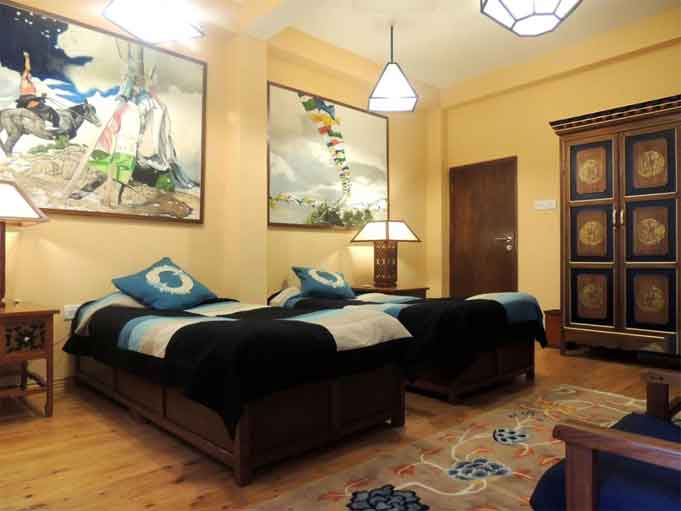
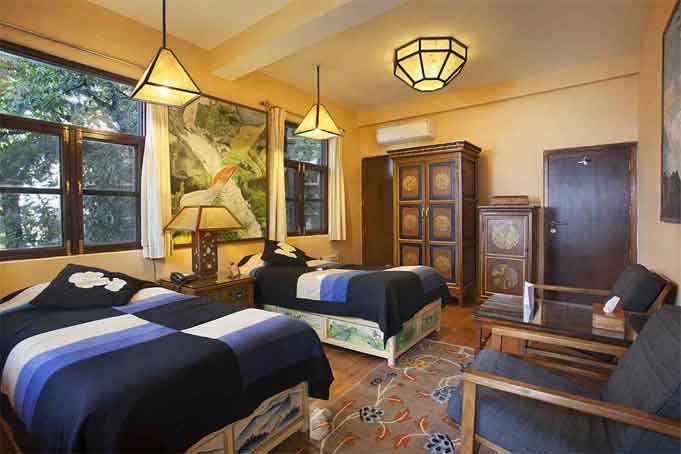
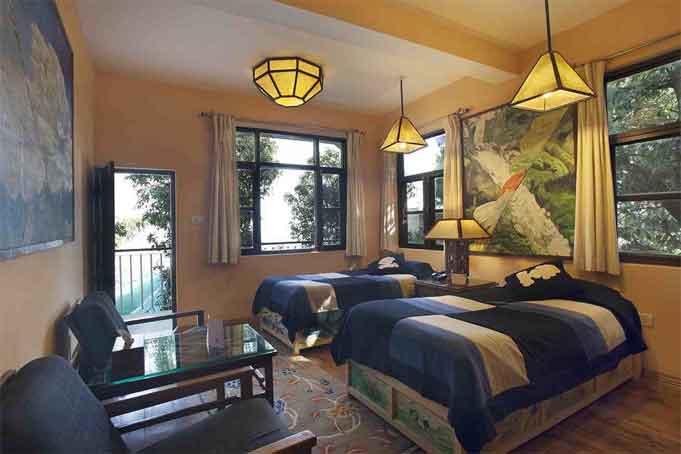
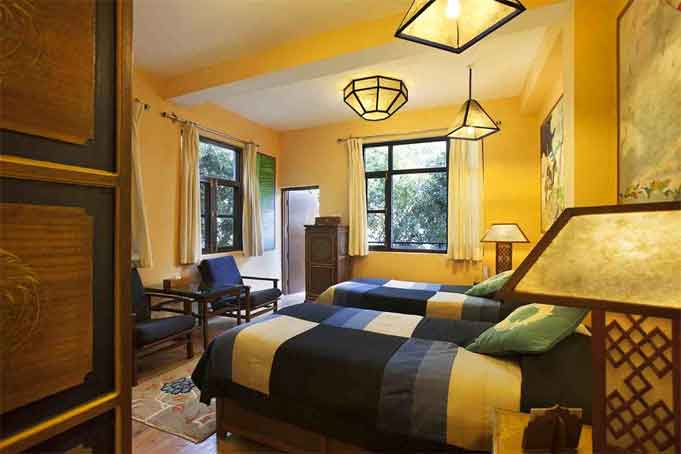
TREES AND FLOWERS
SUITE Despite its rugged terrain, Tibet has a wide
variety of plants and flowers. The mountains rise
abruptly, resulting in a diversity of ecosystems that
range from grasslands and subtropical forests to alpine
meadows above the tree line. Meadow wildflowers grow
in profusion during the warm summer months and it
is rare to hear a nomad speaking about his homeland
without him mentioning this beautiful scene. This
suite contains two adjoining bedrooms– one with a
queen bed, and the other with two twins. It is located
on the ground floor and has an attached balcony.
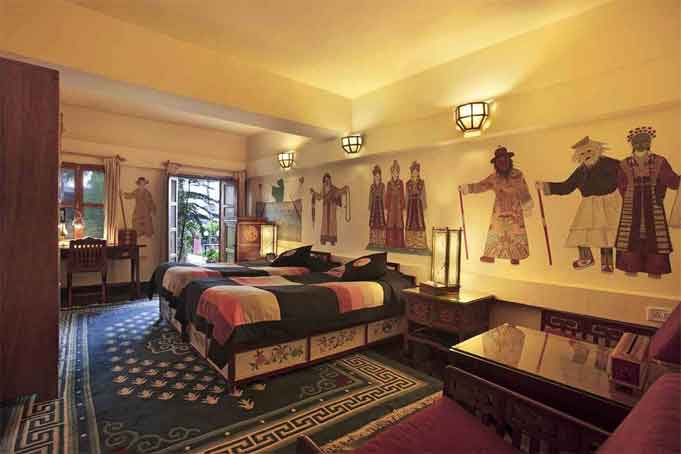
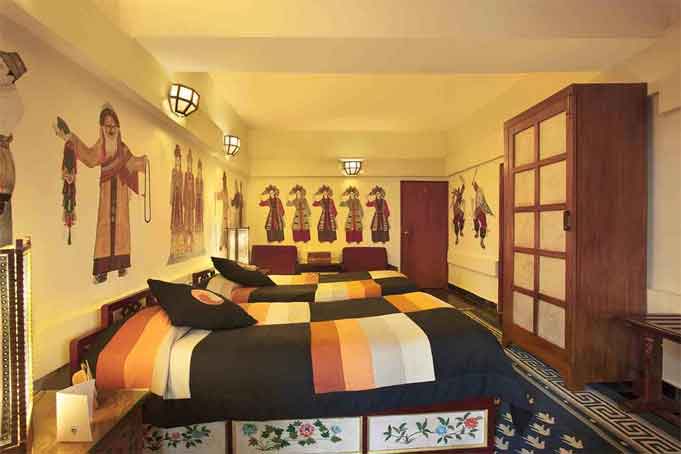
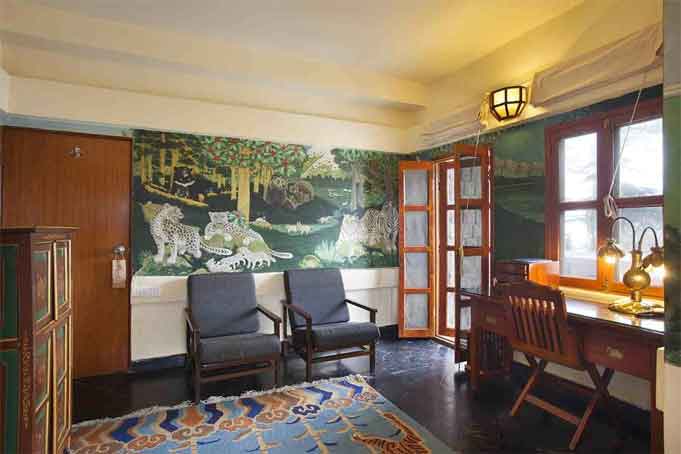
CENTRAL TIBET ROOM
Picture Central Tibet is one of the three traditional
regions of Tibet, comprising the provinces of U and
Tsang, and most of Western Tibet. In many ways, Central
Tibet is the cradle of high Tibetan culture. Lhasa,
the capital of Tibet is located here, as is the Potala,
the residential palace of the Dalai Lama. This superior
category room is located on the first floor, and has
two twin beds which can be converted into a king.
It also has an attached balcony.
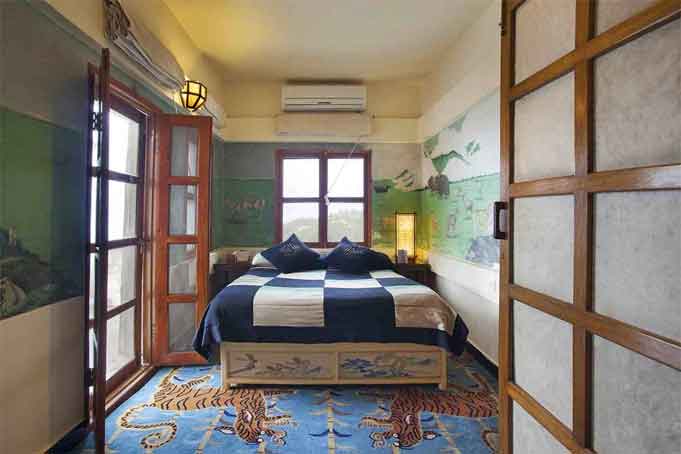
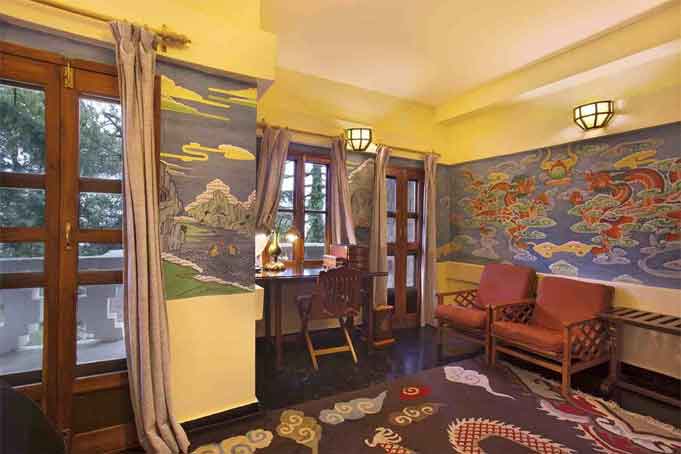
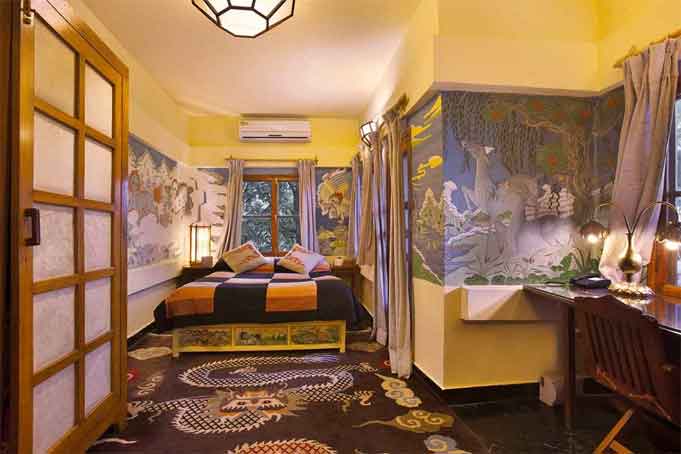
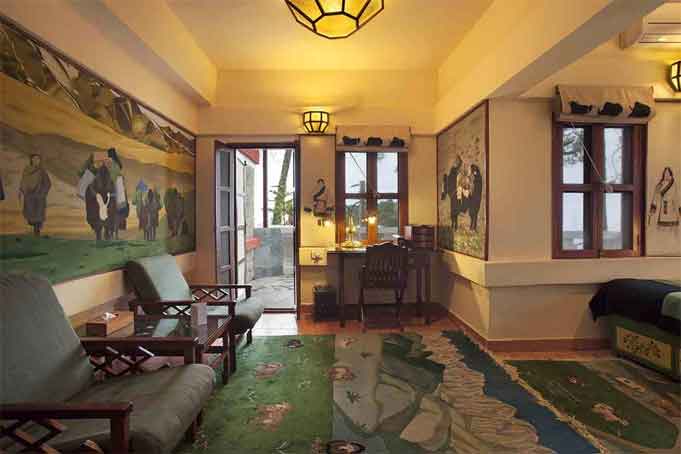
AMDO ROOM Amdo is
in Northeastern Tibet and stretches from the borders
of inner Mongolia to the deserts of what used to be
the Silk Road and is now the Gangsu province of China.
Amdo is famous for its fast horses, its beautiful
grasslands, and its three great monasteries: Kumbum,
Labrang, and Kirti. This superior category room is
located on the second floor, and has two twin beds
which can be converted into a king. It also has an
attached balcony.
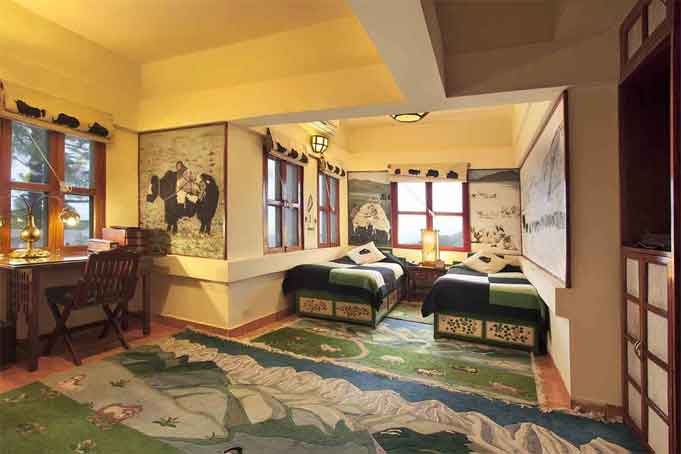
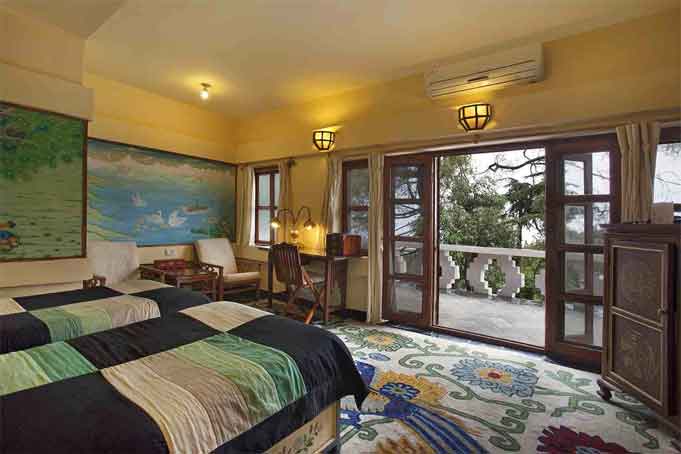
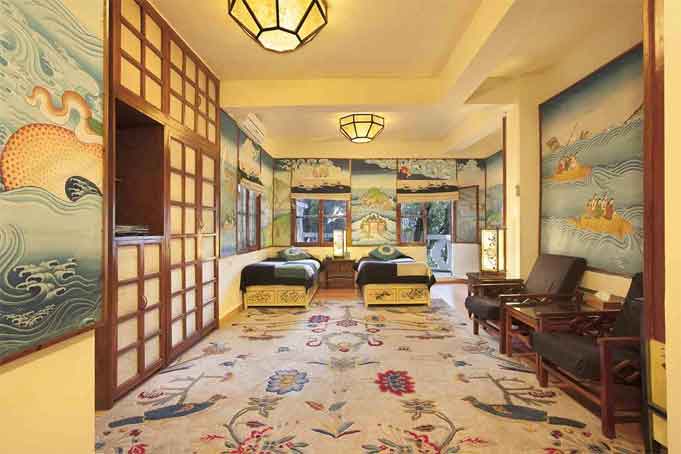
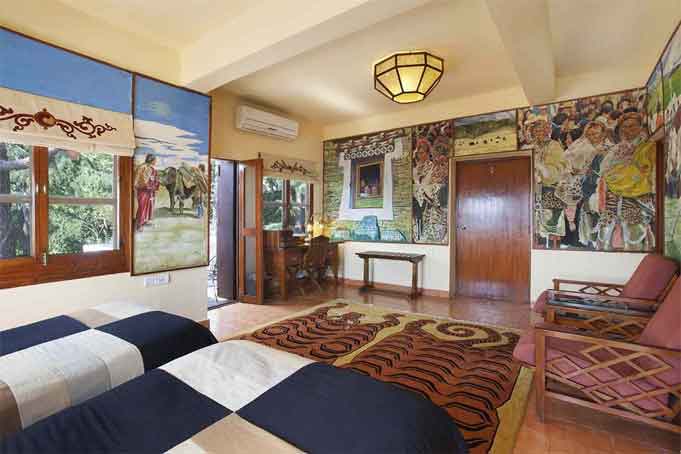
KHAM ROOM Kham is
another of the three historical regions of Tibet.
It extends to the borders with Szechuan and Yunnan
in China. The landscape of Kham varies widely from
high mountains, to lush forests, to great rivers.
Traditionally, Kham was know as Chuzhi Gangdruk, or,
"four rivers and six ranges." Khampa people are known
for both their bravery and gentle natures. This superior
category room is located on the second floor, and
has two twin beds which can be converted into a king.
It also has an attached balcony.
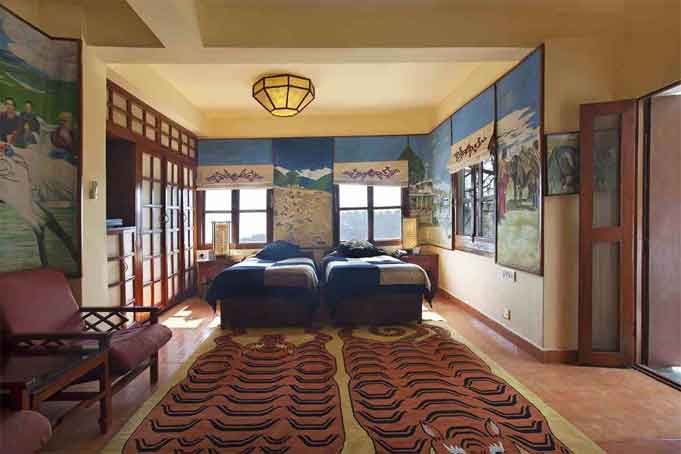
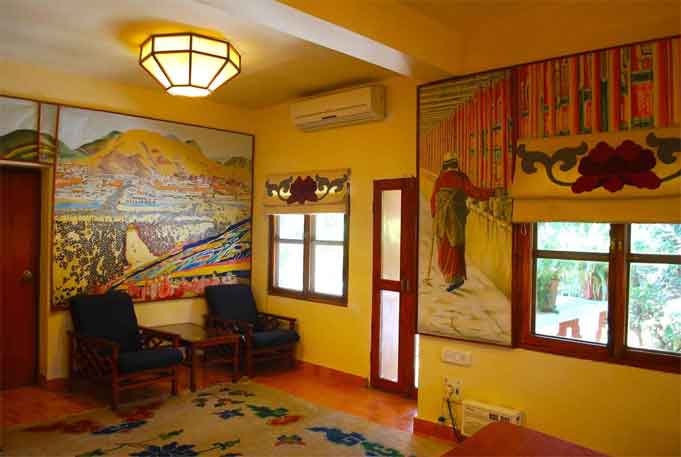
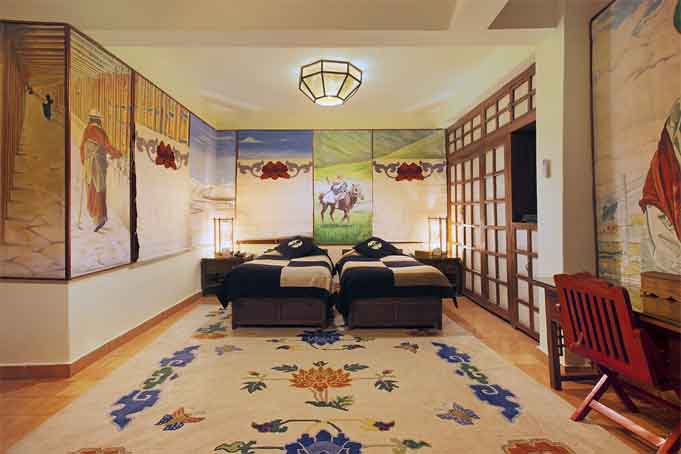
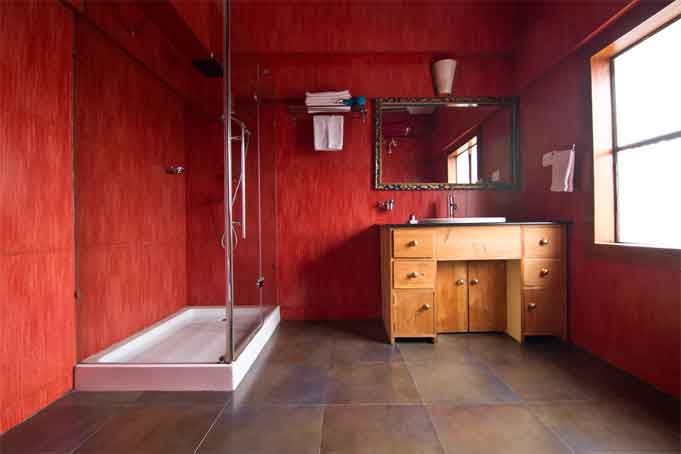
VOYAGE AT SEA ROOM
The wall paintings for the Voyage at Sea room were
inspired by the Jataka Tales, which recount stories
from the former lives of the Buddha. These Indian
tales describe the voyages of merchants seeking their
fortune at sea. Intent on gathering precious jewels,
they braved the dangers posed by sea monsters and
other vile creatures, nagas, storms and enchanted
islands. This superior category room is located on
the first floor, and has two twin beds which can be
converted into a king. It also has an attached balcony.
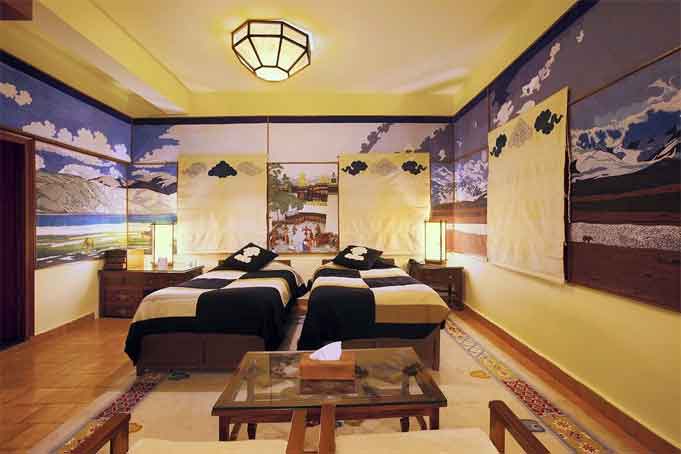
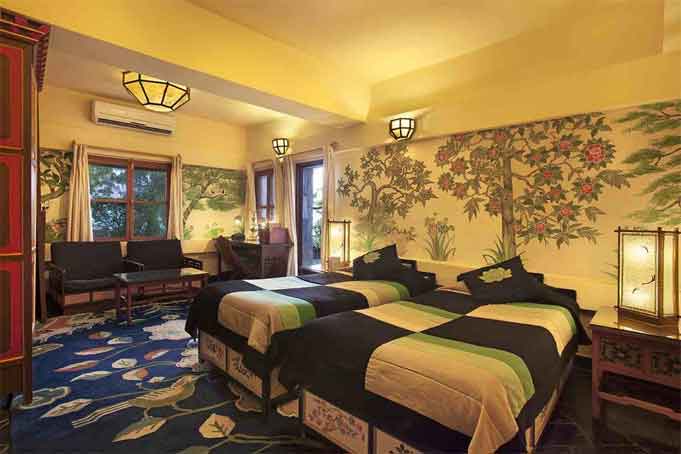
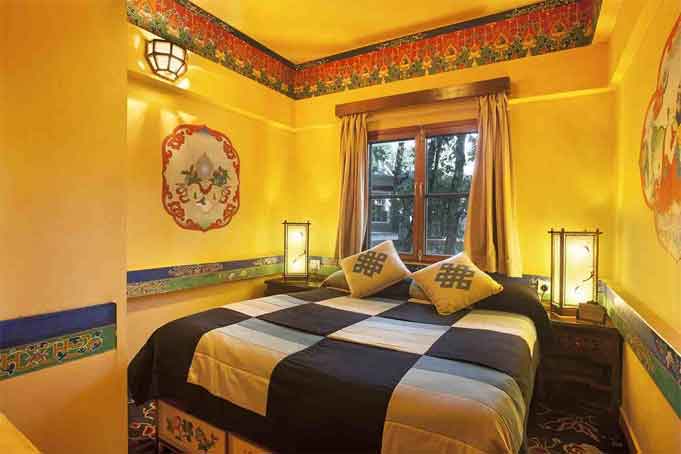
BIRDS OF TIBET ROOM
Tibet lies along major migration routes for birds.
More than 480 species have been sighted in Tibet.
Of these only 30 or so live in Tibet full time. Among
the birds seen in Tibet are swans, partridges, pheasants,
grebes and snow cocks. The black-necked crane, featured
on these murals, is revered as a spiritual being by
many Tibetans, and inhabits remote areas up to 16,000
feet. This superior category room is located on the
second floor, and has two twin beds which can be converted
into a king. It also has an attached balcony, and
one of the best views at Chonor.
NOMAD ROOM Nomads
can be found in all parts of Tibet, but especially
on the Northern plains. Nomads herd mostly yaks and
sheep, and depend on these animals in every aspect
of their lives from food to clothing, to the huge
tents they weave out of swaths of yak hair. This superior
category room is located on the first floor, and has
two twin beds which can be converted into a king.
It also has an attached balcony, and one of the nicest
views in Chonor.
MYTHICAL CREATURES
ROOM Tibet is a land that captures the imagination,
with its vast landscape and exotic creature. Here,
everyday speech is filled with folktales, and magic
is not so out of the ordinary. The four most beloved
creatures-- the dragon, the snow lion, the tiger,
and the garuda-- form a quartet representing each
of the elements, and are often found adorning Tibetan
furniture and paintings. This superior category room
is located on the second floor, and has one queen
bed. It also has an attached balcony.
WILD ANIMALS ROOM
Because of its diverse and extreme climates, Tibet
is home to a number of rare and interesting animals.
Buddhism encourages developing love for all beings,
and so Tibetans look upon many animals that inhabit
the Tibetan Plateau with affection. It is even said
that in the old days many animals had no fear of humans.
The Swedish explorer Sven Hedin wrote in the early
20th century, "The wild animals do not sense that
man is their enemy." These murals feature the giant
panda, as well as the tiger and the rare Tibetan antelope.
This superior category room is located on the second
floor, and has one queen bed. It also has an attached
balcony.
LHAMO OPERA ROOM
Tibetan opera originated with the 11th century saint,
Thangton Gyalpo, who organized villagers into dance
troupes to raise funds for building chain bridges.
Later, opera troupes could be found all over Tibet.
The most famous were patronized by the Tibetan government
and the aristocracy and performed for the Dalai Lama
and the people of Lhasa in the gardens of the Norbulingka.
This premium category room is located on the ground
floor, and has two twin beds which can be converted
into a king. It also has a private door opening onto
a terraced garden.
LUNGTA ONE Lungta
literally means "wind horse," but it is also the Tibetan
word for prayer flag. Tibetans believe that as the
wind blows and moves the flags, the prayers printed
on the flags are carried on the breeze and spread
to all beings. This is why many times prayer flags
can be seen hung in high places, so that the most
possible beings can be benefited. This premium category
room is located on the second floor, and has two twin
beds which can be converted into a king. It also has
an attached balcony.
LUNGTA TWO Lungta
literally means "wind horse," but it is also the Tibetan
word for prayer flag. Tibetans believe that as the
wind blows and moves the flags, the prayers printed
on the flags are carried on the breeze and spread
to all beings. This is why many times prayer flags
can be seen hung in high places, so that the most
possible beings can be benefited. This premium category
room is located on the second floor, and has two twin
beds which can be converted into a king. It also has
an attached balcony.
|